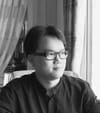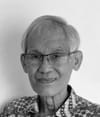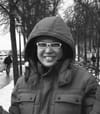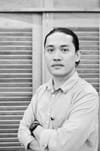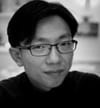Photos of artworks provided by Choong Kam Kow
SEVENTY YEARS—that is how long ago Choong Kam Kow started his artistic exploration.
Born in Ipoh in 1934, he began dabbling with the arts in the 1950s. He initiated his formal art academic training in Taiwan (Bachelor’s degree in National Taiwan Normal University, Taipei in 1961) and before continuing his education in New York, US (Master’s degree in Pratt Institute, in 1968). This exposure not only cemented his career pathway in art education but also developed his personal identity through the practice of contemporary art. From being a primary and secondary school art teacher, he went on to be a lecturer and senior lecturer at Institut Teknologi Mara (now Universiti Teknologi Mara or UiTM), from 1969 to 1989; Dean of the School of Fine Arts, LASALLE-SIA College of the Arts, Singapore from 1989 to 1994; Vice President from 1995 to 1999 and President of Malaysian Institute of Art from 2000 to 2009.
Choong says there is a clear distinction in how art is imparted at his alma maters in the east and the west. “In Taiwan, they built on a strong artistic foundation ― both skills and knowledge, facilitating art teaching and creative development as an artist. However, studying in New York, a centre of emerging and flourishing modern art movements, enriched my artistic exploration with exposure to the many ‘newism’ art, from Abstract to Abstract Expressionism, Pop Art, Geometric Abstraction, Hard-edge, Minimalism, Photorealism, et cetera.”
Throughout his career, he created art in a series of themes, beginning with an exploration and research phase, where he experimented with different mediums, techniques, materials, styles and subjects before establishing his own style. He created the Formosa Series (1957-1961); The Kinta Series (1961-1978); Expressionistic Ink Painting Series (1965-1986); Print Series (1965-2012); and Figure Studies Series (1950s-70s).
Each series applies a different style but in a similar working pattern, using more rational, intellectual and disciplinary approaches. Rather than expressing instantaneousness through his works, he would apply more structured methods, using analytical and logical strategies, from aesthetic ideas to conceptual configurations and creative contents. In each series, the subjects of culture, philosophy, nature and the social environment are examined.
Here, we walk through his innovative visual vocabulary spanning seven decades.


